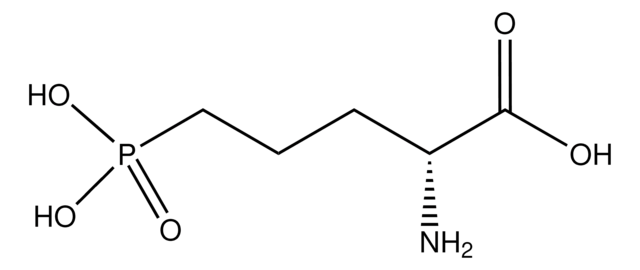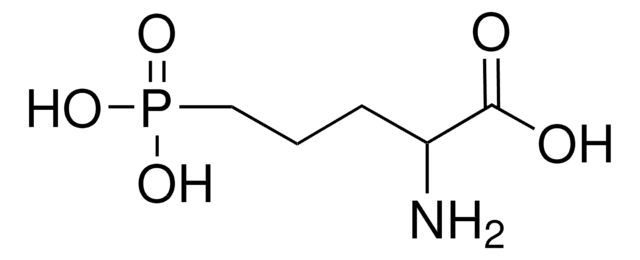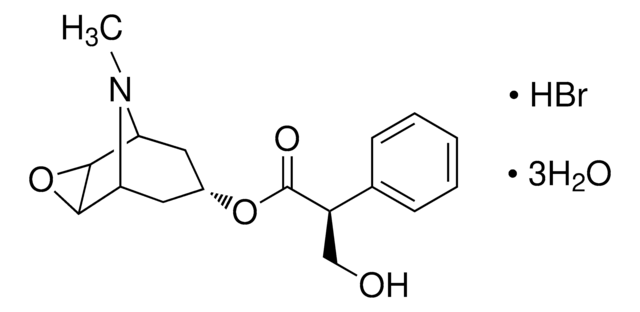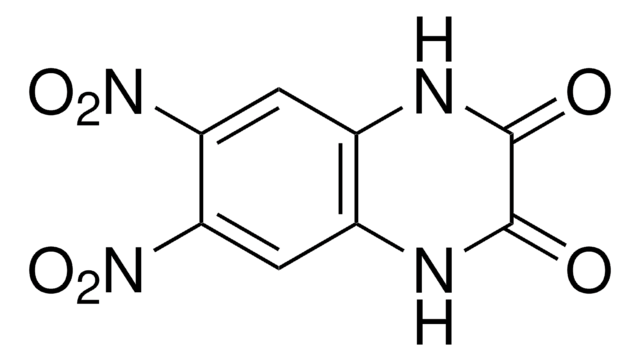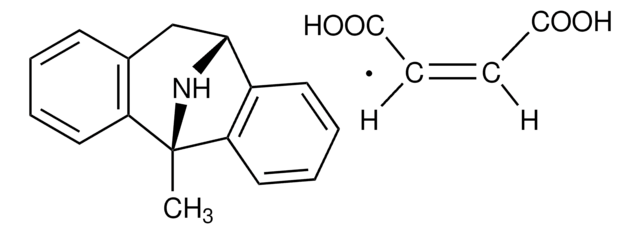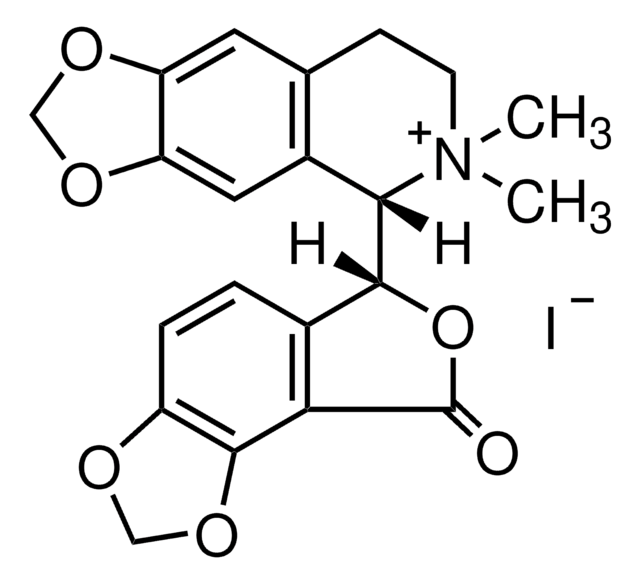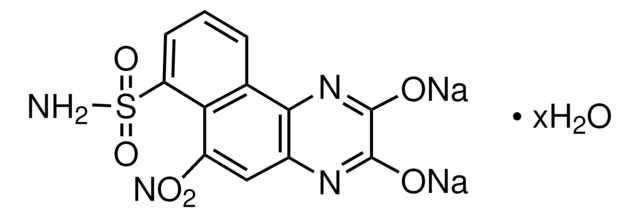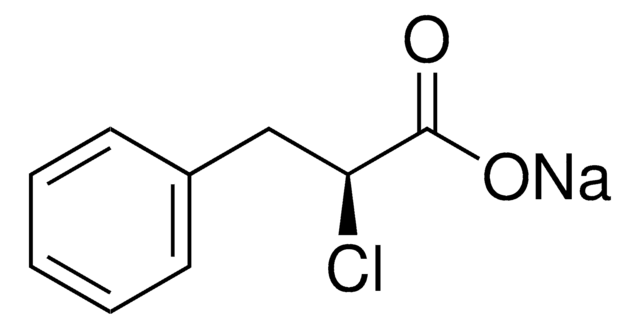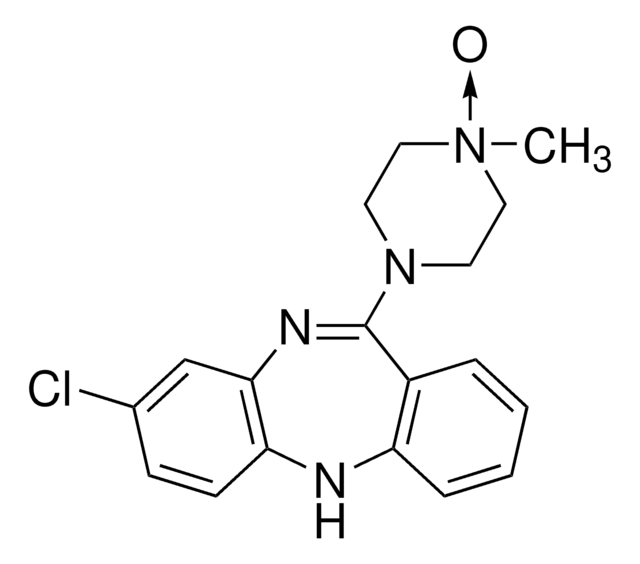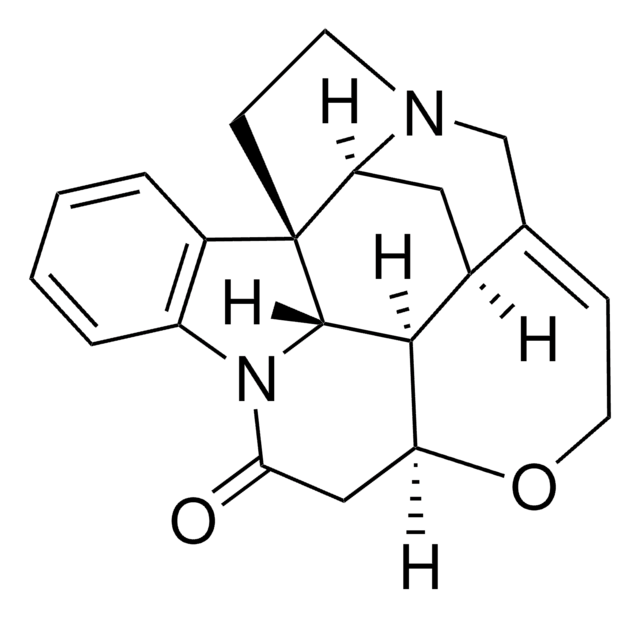Kluczowe dokumenty
C104
(±)-CPP
solid
Synonim(y):
(±)-3-(2-Carboxypiperazin-4-yl)propyl-1-phosphonic acid
About This Item
Polecane produkty
Formularz
solid
Poziom jakości
kolor
white
rozpuszczalność
H2O: 99.2 mg/mL
ethanol: insoluble
ciąg SMILES
OC(=O)C1CN(CCCP(O)(O)=O)CCN1
InChI
1S/C8H17N2O5P/c11-8(12)7-6-10(4-2-9-7)3-1-5-16(13,14)15/h7,9H,1-6H2,(H,11,12)(H2,13,14,15)
Klucz InChI
CUVGUPIVTLGRGI-UHFFFAOYSA-N
informacje o genach
human ... GRIN1(2902) , GRIN2A(2903) , GRIN2B(2904) , GRIN2C(2905) , GRIN2D(2906) , GRINA(2907)
rat ... Grin2a(24409)
Szukasz podobnych produktów? Odwiedź Przewodnik dotyczący porównywania produktów
Zastosowanie
- to study its effects on blood glucose in mice
- in electrophysiological recording in mouse brain slices
- in electrophysiological recording in rat hippocampal pyramidal neurons
Działania biochem./fizjol.
Przestroga
Hasło ostrzegawcze
Warning
Zwroty wskazujące rodzaj zagrożenia
Zwroty wskazujące środki ostrożności
Klasyfikacja zagrożeń
Eye Irrit. 2 - Skin Irrit. 2 - STOT SE 3
Organy docelowe
Respiratory system
Kod klasy składowania
11 - Combustible Solids
Klasa zagrożenia wodnego (WGK)
WGK 3
Środki ochrony indywidualnej
dust mask type N95 (US), Eyeshields, Gloves
Wybierz jedną z najnowszych wersji:
Masz już ten produkt?
Dokumenty związane z niedawno zakupionymi produktami zostały zamieszczone w Bibliotece dokumentów.
Klienci oglądali również te produkty
Nasz zespół naukowców ma doświadczenie we wszystkich obszarach badań, w tym w naukach przyrodniczych, materiałoznawstwie, syntezie chemicznej, chromatografii, analityce i wielu innych dziedzinach.
Skontaktuj się z zespołem ds. pomocy technicznej